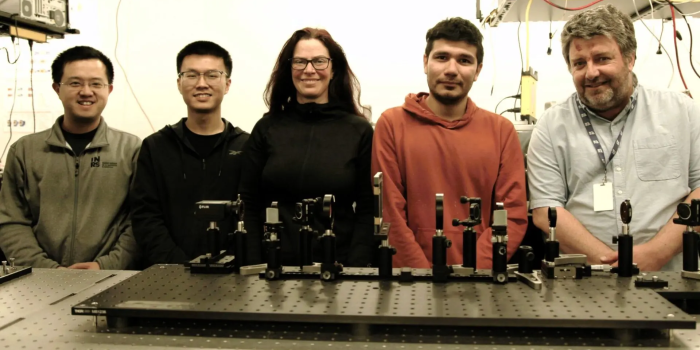Engineers at the INRS Énergie Matériaux Télécommunications Research Centre in Canada have designed the fastest camera in the world. It has a remarkable frame rate of 156.3 trillion frames per second (fps).
The most excellent phone slow-mo cameras typically operate at a few hundred frames per second, although professional movie cameras sometimes use a few thousand to create a smoother appearance. The new camera is claimed to record events in quadrillionths of a second, or femtoseconds.
The researchers expanded upon compressed ultrafast photography (CUP), a system they created in 2014 that could capture an apparent meager 100 billion frames per second. Next, they designated T-CUP, which stands for “trillion-frame-per-second.” As promised, it could process up to 10 trillion frames per second. Then, in 2020, the group used a version known as compressed ultrafast spectral photography (CUSP) to increase it to 70 trillion frames per second.

It has more than doubled, reaching 156.3 trillion frames per second. “ScaRF” stands for “swept-coded aperture real-time femtophotography”—a novel camera system that can record events that happen too quickly for even earlier iterations of the technology to see.
For SCARF to function, a “chirped” ultrashort laser light pulse must first be fired through the object or event being imaged. If you visualize the light as a rainbow, the red wavelengths will detect the event first, followed by orange, yellow, and violet. Because everything happens so quickly, the item has already changed by the next “color” reaches it. This allows the pulse to record the entire item changing in a very short period.

Following that, the light pulse passes through several operations, such as diffracting, encoding, reflecting, and focusing, before arriving at the sensor of a charge-coupled device (CCD) camera. A computer then transforms the data into an image after it has been taken.
While it is unlikely that the general public will see high-speed recordings of balloon bursts recorded by SCARF devices, scientists believe that recording new, ultrafast events could advance physics, biology, chemistry, materials science, and engineering, among other fields.
The research was published in the journal Nature Communications.


